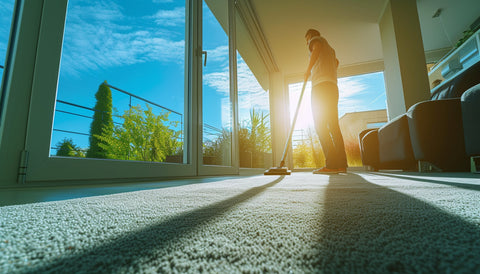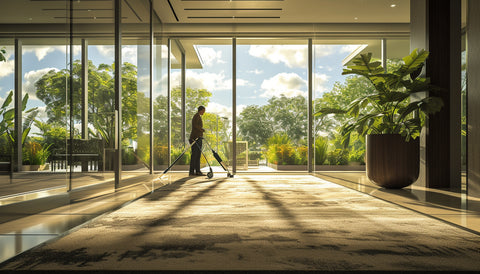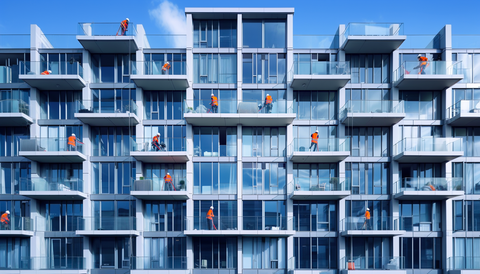By Max Goldrich - February 2, 2024
Introducing robotic vacuums into apartment complexes and multifamily dwellings is revolutionizing how we approach property upkeep. These intelligent, automated cleaners are reshaping the maintenance of both shared and private areas within these living spaces.
The days of relying entirely on manual cleaning are fading, as these robots bring efficiency and precision to the task. This change isn't just about adding a high-tech gadget; it's an upgrade to the living standards, enhancing the appeal of these multifamily properties to current and potential residents.
This shift in cleaning strategy marks a fundamental transformation in maintaining multifamily settings. These vacuums have the latest sensor technology, advanced navigation systems, and powerful suction capabilities. They are versatile, handling everything from routine dusting to deep cleaning tasks. With this level of capability, every area of a multifamily property, regardless of its size or complexity, is maintained at a higher standard, ensuring a clean and well-kept environment for all residents.
Consistent Cleanliness Across Units
For those living in these properties, the consistent cleanliness provided by robotic vacuums is a highly valued aspect of their living experience. This technology ensures a constantly clean environment without requiring residents to intervene personally, promoting a healthier and more hygienic lifestyle. The non-intrusive nature of these vacuums, operating quietly and efficiently, respects residents' privacy and comfort, particularly during night-time cleaning schedules.
Modern robotic vacuums are also highly accessible and can be managed via smartphones or integrated property management systems. This ease of use and control appeals to residents and property managers who can monitor and adjust cleaning schedules as needed.
Enhanced Efficiency and Time Management
Property managers benefit significantly from these devices' efficiency and time management improvements. Operational efficiency is optimized by reallocating human resources from routine cleaning to more critical tasks. Furthermore, the long-term cost savings are substantial. The initial investment in these robotic vacuums is offset by reduced needs for deep cleaning and less wear on traditional cleaning equipment, leading to noticeable savings in maintenance and labor costs.
Improved Resident Satisfaction
Robotic vacuums also play a crucial role in enhancing resident satisfaction. These practical devices add a modern, tech-savvy edge to the living environment, appealing to prospective and current residents alike. Their easy integration with smartphones and property management systems adds to their appeal, offering residents and managers easy control and monitoring capabilities.
Quiet Operation & Allergy Management
Robotic vacuums are designed to operate quietly, essential in multifamily properties where noise can be a significant nuisance. Their quiet cleaning cycles ensure that residents are undisturbed, especially during night-time cleaning schedules. These vacuums also contribute to a healthier living environment by reducing allergens like dust and pet dander, which is particularly beneficial for residents with allergies.
Revolutionizing Cleanliness in Multifamily Living
Adopting robotic vacuum cleaners in apartment complexes and other multifamily properties is a giant leap forward. It's a glimpse into a future where our shared residential spaces do more than look good and feel comfortable; they're about embracing intelligent technologies that enhance everyday communal living.
Choosing these advanced cleaning tools in multifamily properties shows a real commitment to staying current and making life easier for diverse residents, which is crucial in a world that moves quickly. For anyone living in or considering moving into these multifamily complexes, the presence of this tech adds a significant appeal.
In essence, these robotic cleaners are reshaping maintenance norms in multifamily properties. They're raising the standard of living and making these spaces more attractive for current and potential residents, setting a new benchmark in communal living.



